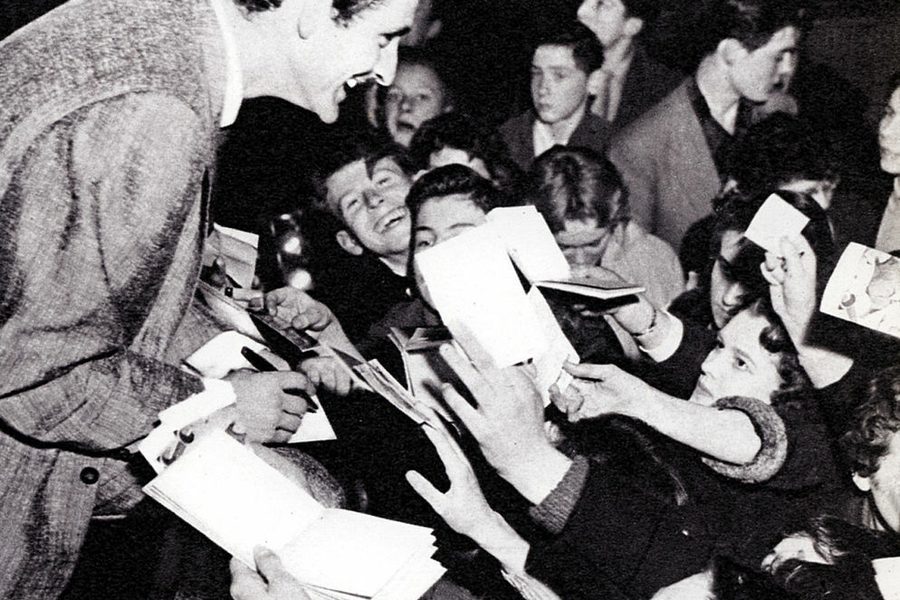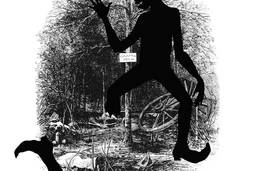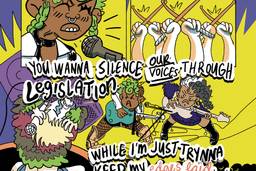Before Punk, Skiffle Music Gave Voice to a Working Class That Wanted to Dance
Billy Bragg’s new book explores the blue-collar precursor to the British Invasion sound.
Micco Caporale

When World War II ended for Britain, so did the trappings of a traditional working-class identity. Full employment coupled with expansive welfare provisions diluted a historical class consciousness largely defined by a shared experience of poverty. An increase in wealth and material security marked a shift towards more bourgeois expressions of class and values (interestingly, without access to the same bourgeois opportunities). And it also spurred the rise of a new consumer group: the working-class teenager.
With teens earning real wages that had grown by 50 percent since 1938 and few looking ahead to university (more often, working class youths wound up in military service), working-class British teens had enough free time and spending power to change the cultural landscape. The impact of this social shift is explored by Billy Bragg in his new book Roots, Radicals and Rockers: How Skiffle Changed the World.
Bragg uses his background as a leftist activist and folk-rock singer to look at the history of skiffle, a short-lived, distinctly British antecedent to rock n’roll propped up by a burgeoning youth movement. The story of skiffle — a genre best likened to America’s rockabilly, with a few key differences — began with a popular underground jazz musician defecting from the British navy. Ken Colyer had a burning love of blues but had only been able to experience it through recordings, so in 1952 he secured a month-long immigration visa to the United States. After his ship docked in Mobile, Alabama, Colyer fled to New Orleans. His goal? To learn the “authentic” New Orleans jazz sound at the hands of the masters he’d grown up idolizing.
Crossing the ocean to Britain on vinyl, jazz and blues became largely divorced from their social context. White audiences eagerly consumed the recordings despite strict rules from Britain’s Musicians’ Union that prevented American musicians from touring England. At that time, British music was proper and formal: something expressed on a page, a language one was taught to understand. It was played by big bands and orchestras that required special training. Jazz and blues, on the other hand, came from somewhere else entirely. Through records and British-run trade journals, white audiences embraced this new style of music with its raw and modern sound. They saw it as something they could teach themselves. And they loved it. This is what Colyer and his peers heard listening to artists like Lead Belly..
Colyer wrote accounts of his musical adventures in America to his brother Bill, who capitalized on Ken’s reputation in the jazz scene by publishing his letters in Melody Maker, a leading music journal. To his lower-income, landlocked peers, Ken making it all the way to New Orleans seemed the stuff of dreams. His stay ended abruptly, however: Ken was deported under legislation that barred “threats” to the American way of life such as “political radicals.” As a white man who dared share the stage with Black men in the Jim Crow south, Colyer was deemed such a radical. But he returned to England a legend with a fan base whose ears were already poised for new musical expressions.
Bill Colyer first introduced the term “skiffle” as a musical description when he let it slip on-air on the BBC. Ken had put together a guitar-led, roots-based band, a far cry from the polished sax-and-horn jazz popular at the time. When asked what to call the music, Bill unconsciously blurted the word. Historically, “skiffle” had been Black American slang for rent parties common in the 1920s, later eulogized on boogie-woogie and ragtime records. But in a linguistic twist, Bill transformed it from an obscure term for a party into a popular term for a genre of music that announced the party.
It would be a number of years before skiffle enjoyed broad cultural recognition — a success fueled not by Ken Colyer, but by a recruit to his band, Lonnie Donegan. In its earliest days, however, skiffle was an immediate success in the U.K. underground, where white working-class youth, suffocating from over a decade of rationing and austerity, were looking for a breath of fresh air.
In 1953, Teddy Boys and Girls — or Teds, as members of the British youth subculture are often called — started emerging, identifiable by their Edwardian garments and industrial backgrounds. They rejected the static foxtrots of their parents for the thrill of jive and bop — dance styles seen as a disruption to club étiquette because of their energetic movement and their roots in Black culture. Subsequently, the dancing styles — along with the Teds — were banned from many venues. Teds rushed in their creeper shoes to the jazz clubs, where skiffle was blossoming.
The Teds were markers of the first post-war demographic neither child nor adult to signal a shift in the cultural tide. By the mid-50s, youth culture drove the rise of the coffee bar, and their disaffection transformed movies, plays„ art and literature, thrusting the varied perspectives of anti-heroes, outlaws and factory workers into the limelight. Awash in the post-war consumerism immortalized in pop art, rebelling against the crooner polish that echoed through the airwaves, the three-chord “authenticity” of skiffle was a welcome respite — made all the more attractive by how easy it was to produce. Suddenly, authority figures couldn’t dictate what music was consumed by the younger generation because kids had the time, money and venues to make it themselves, and for each other.
Skiffle’s three-chord progression (later a staple of punk) was liberation for its fans. While rooted in American Black music, skiffle revised a song catalogue Black musicians and listeners had long abandoned, simultaneously fusing it with traditional English folk songs, sea shanties, country and gospel — all grassroots musical styles that didn’t require formal training to play. Magazines began running features on how to make instruments for skiffle bands, featuring anything from the washboard to the guitar. A director of one of Britain’s largest instrument retailers told News of the World that demand for guitars had increased tenfold by the fall of 1956 — less than two years after Lonnie Donegan broke into the charts with the first distinctly skiffle hit, a cover of “Rock Island Line.”
At the close of the decade, skiffle petered out, leaving a blues revival in its wake that would be fully realized by rock bands like the Rolling Stones. For all its cultural significance, though, Bragg may overstate how “radical” skiffle was. The music certainly betrayed the full cultural force of teenagers in the wake of World War II, and it predated the anti-authoritarian attitude and DIY ethos of punk rock by a good 20 years. But besides providing a musical home for a handful of leftist musicians and audiophiles— most notably, Alan Lomax and Peggy Seeger, half-sister of famed folk singer Pete Seeger — skiffle was hardly political in a traditional sense. Leftists like Lomax worked hard to make space for skiffle on radio programs like Ballad and Blues and they invited skiffle musicians to fundraisers for communist causes, but besides songs borrowed directly from working-class traditions, skiffle was as much about having fun and being in and out of love as anything else. Who was making the music and how it was being made were skiffle’s most radical qualities of all.
Skiffle failed to keep Britain’s working-class from political fracturing, but it did produce a generation of influential working-class musicians. The Beatles grew out of skiffle group the Quarrymen — John Lennon, Paul McCartney and George Harrison’s best attempt to make Lonnie Donegan fan music. When young Pete Townshend saw Ken Colyer play, he thought, “[The guitar] is going to the change the world. … I was going to get this guitar and it was going to be bye-bye, old timer, and that’s exactly what happened.” Roots, Radicals and Rockers does a good job of demonstrating the working class’s potential to influence culture. Rediscovering a cohesive class consciousness could make that cultural force truly political.






